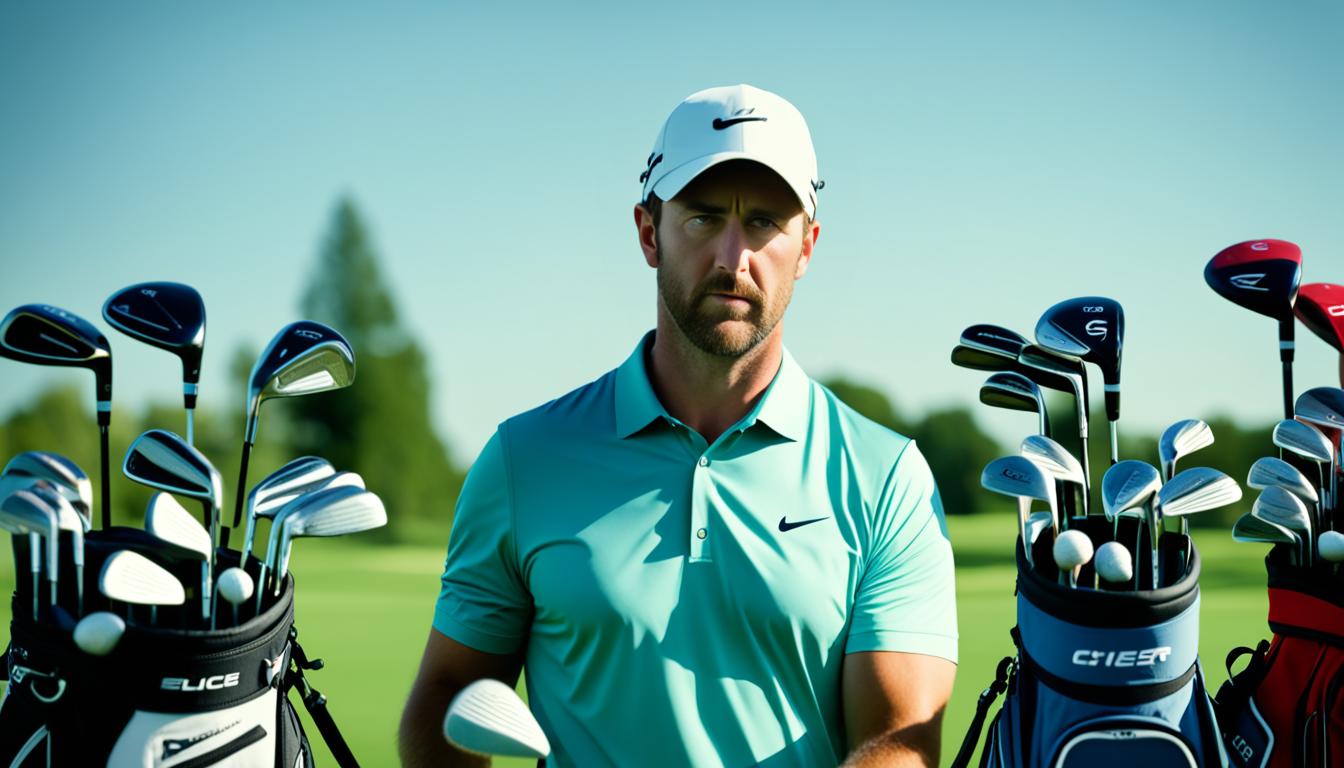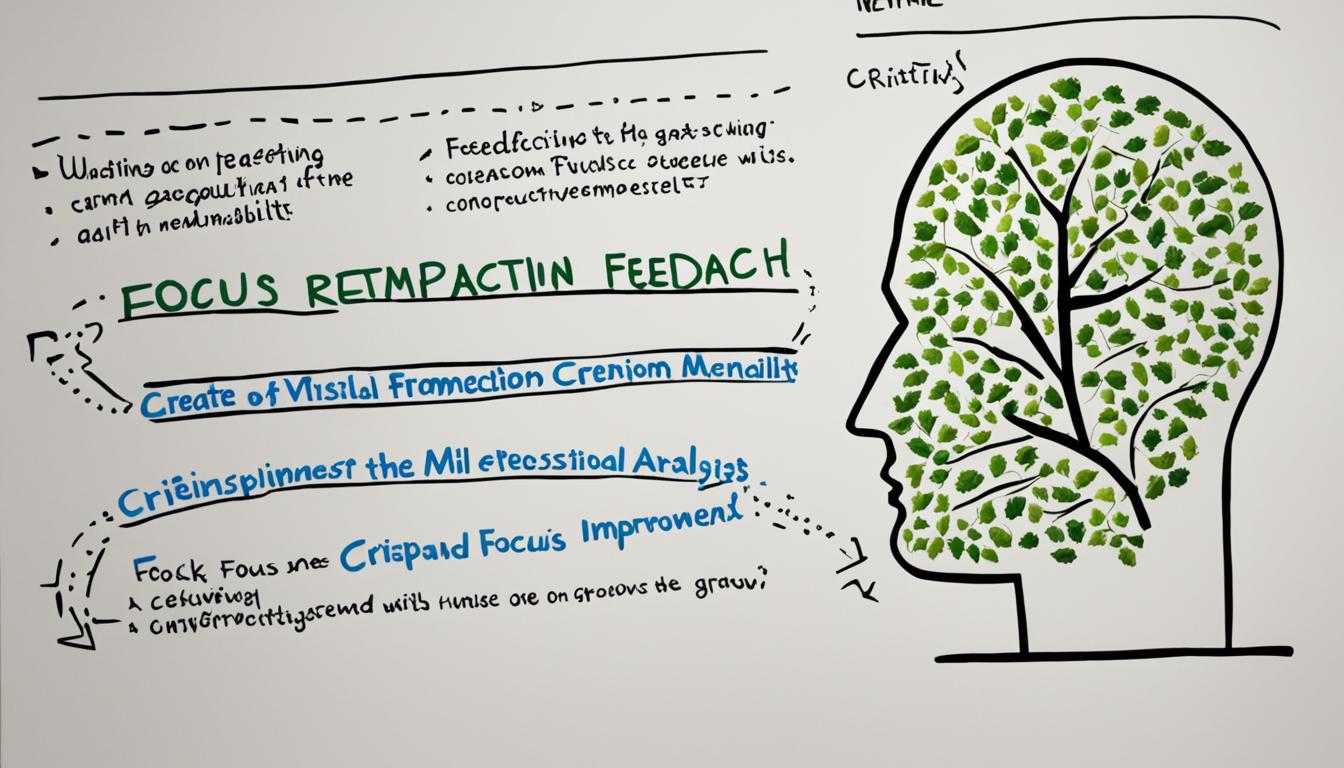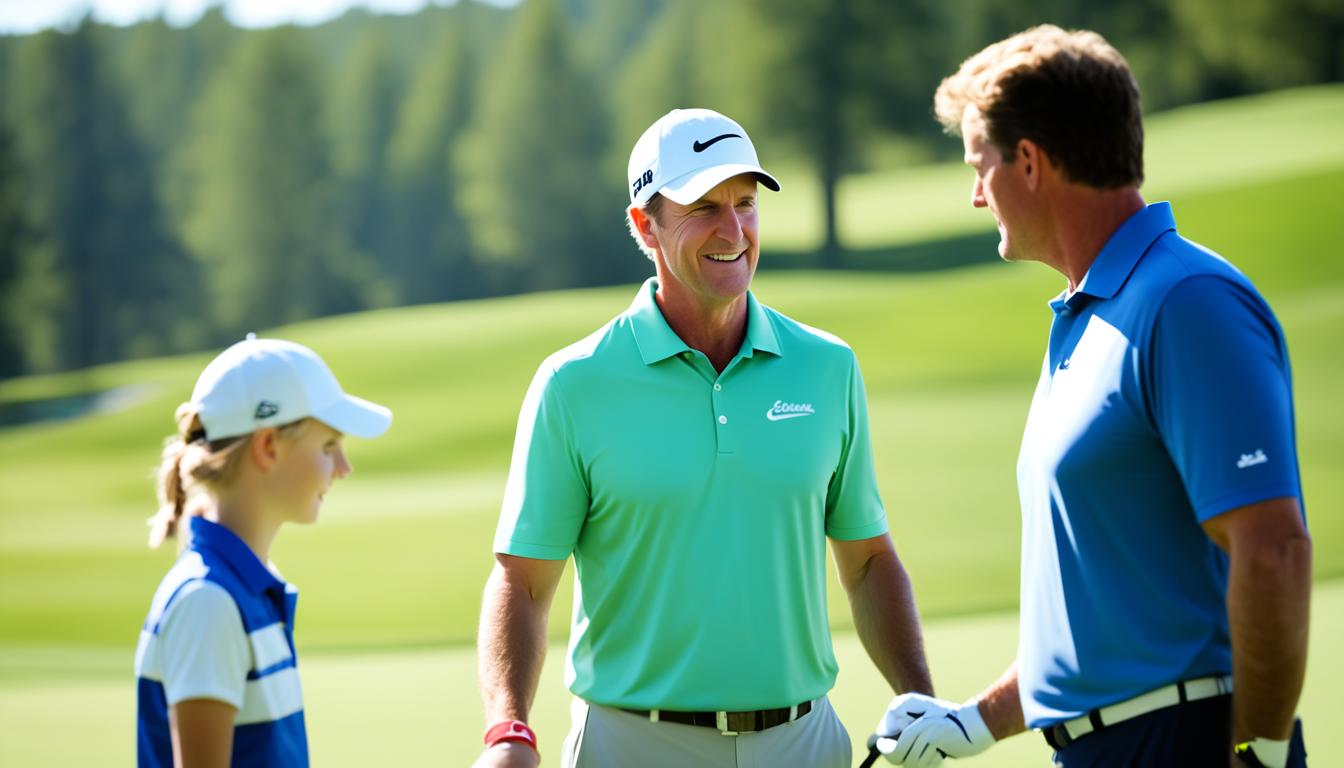Golf is a game of precision, skill, and strategy. While many golfers focus on improving their swing, it’s essential to recognize the mental aspect of golf club selection. Choosing the right club for each shot can greatly impact your performance on the course. Today, we dive into the psychology behind golf club selection, uncovering valuable tips and strategies to help you make smarter choices and elevate your game.
Key Takeaways
- The mental aspect of golf club selection is often overlooked but important for success on the course.
- Understanding the complexity of golf and the variety of clubs available is crucial for making informed decisions.
- The golfer’s mindset plays a significant role in club selection, and improving the mental game can lead to better choices.
- Knowing your own game and playing style helps you choose clubs that complement your strengths and weaknesses.
- Visualization and trusting your instincts are powerful tools in making confident club selection decisions.
The Complexity of Golf and Club Selection
Golf is a highly complex sport that requires careful consideration of numerous variables for every shot. Unlike other sports, golfers have a wide variety of clubs at their disposal, each serving a unique purpose and requiring specific techniques. With 14 different clubs to choose from, the selection process becomes a critical aspect of the game, demanding a deep understanding of the infinite possibilities and constant adjustments required to navigate the course effectively.
One unique aspect of golf is the wide range of shots a golfer must make throughout a round. From tee shots to approach shots, chipping to putting, each shot presents its own set of challenges that necessitate careful club selection. Take the sand wedge, for example. This versatile club is used for a multitude of shots, including getting out of bunkers, executing delicate chip shots, precise pitching, and precise approach shots. The range of shots and the various uses of each club add layers of complexity to the club selection process.
Moreover, golfers must adapt their club selection based on the conditions of the course. The lies of the ball, such as being in the rough, fairway, or sand, significantly impact the performance and trajectory of the shot. Add to this the changing weather conditions, terrain features like slopes and bunkers, and the precise placement of the pin, and the complexity of club selection becomes even more apparent.
To illustrate the multitude of club choices and the intricate decision-making process, here is a summary table showcasing the 14 different clubs typically found in a golfer’s bag and their intended uses:
| Club | Usage |
|---|---|
| Driver | For long-distance tee shots |
| 3 Wood | Alternative for tee shots and fairway shots |
| 2-9 Irons | For approach shots from varying distances |
| Pitching Wedge | Short-distance shots with higher loft |
| Sand Wedge | Getting out of bunkers and executing delicate shots |
| Gap Wedge | For shots between pitching wedge and sand wedge |
| Lob Wedge | Highly lofted club for shots near the green |
| Putter | For precise putting on the green |
The table above provides a glimpse into the variety and versatility of golf clubs, exemplifying the need for accurate club selection depending on the shot at hand. Understanding the unique attributes of each club and their intended usage is key to making informed decisions on the course.
The complexity of golf and club selection demands that golfers possess a deep knowledge of their equipment and sharp decision-making skills. By studying the different club characteristics, practicing a wide range of shots, and adapting to varying lies and conditions, golfers can navigate the challenges of club selection successfully, resulting in improved performance on the course. In the next section, we will delve into the influence of the golfer’s mind and the role it plays in club selection.
The Influence of the Golfer’s Mind
Golf is not just a physical sport; it is also a mental game. The golfer’s mindset plays a crucial role in determining their performance on the course. Factors such as stress, pressure, and the ability to handle emotions can greatly impact club selection. By studying and improving the mental game, golfers can develop strategies to battle through stress, avoid yips, and improve their overall performance.
When it comes to golf, the mind is just as important as the physical aspect of the game. In fact, some say that golf is 90% mental. The ability to stay focused, manage stress, and make clear decisions is essential for success on the course.
Mental Challenges in Golf
Golf poses several mental challenges that can affect a golfer’s club selection. One of the biggest challenges is dealing with stress and pressure. Golfers often experience high levels of stress during competitions or important rounds. This stress can cloud their judgment and lead to poor club choices.
As Bobby Jones once said, “Golf is a game that is played on a five-inch course – the distance between your ears.”
The fear of failure can also create mental obstacles during club selection. The fear of hitting a bad shot or making a mistake can lead to hesitation and indecision. This can result in choosing the wrong club or playing it safe instead of taking calculated risks.
The golf yips is another mental challenge that golfers may face. The yips are involuntary muscle twitches or jerks that can occur during putting or chipping. These involuntary movements can greatly impact a golfer’s ability to execute shots and can also affect club selection.
Improving the Mental Game
To overcome these mental challenges and improve club selection, golfers can incorporate mental game improvement strategies into their training regimen. One such strategy is practicing mindfulness and staying present in the moment. This can help golfers focus on the task at hand and make clear club selection decisions.
Visualization is another effective technique that can aid in club selection. By mentally imagining the desired shot and visualizing the ball flight, golfers can make more confident and accurate club choices. Visualization can also help golfers combat stress and anxiety, leading to better decision-making.
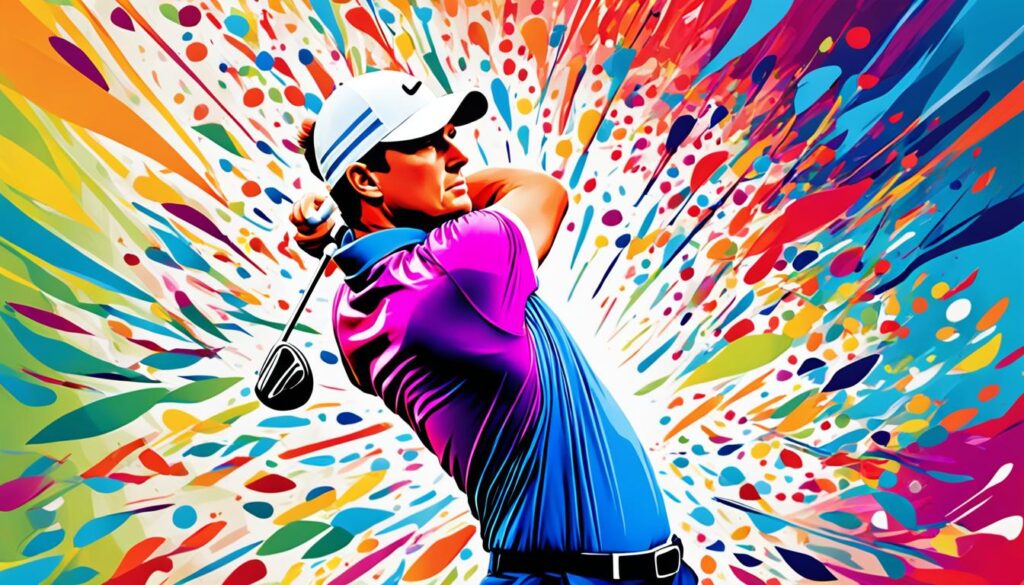
Developing a pre-shot routine is another important aspect of improving the mental game. A consistent pre-shot routine can help golfers establish a sense of calmness and focus before every shot, leading to more confident club selection and execution.
The Mind-Club Connection
It is important for golfers to understand that their mental state directly influences their club selection. When under pressure or battling stress, it is common for golfers to experience a shift in perception and decision-making. This can result in choosing the wrong club for the given situation.
By actively working on the mental aspect of the game, golfers can develop coping mechanisms to combat stress, manage pressure, and make smarter club selection decisions. Improved mental resilience and focus can lead to better shot choices and ultimately improve overall performance on the course.
| Benefits of Mental Game Improvement in Golf | Strategies to Battle Stress and Avoid Yips |
|---|---|
| – Enhanced focus and concentration during club selection | – Practice deep breathing techniques to calm the mind |
| – Improved decision-making abilities under pressure | – Incorporate visualization exercises into practice sessions |
| – Increased confidence in club selection | – Establish a consistent pre-shot routine |
| – Reduced anxiety and fear of failure | – Seek professional guidance from sports psychologists |
Understanding Your Game and Playing Style
One of the key aspects of making smart club choices is understanding your own game and playing style. By identifying your strengths and weaknesses as a golfer, you can select clubs that complement your abilities and enhance your performance on the course.
When analyzing your game, consider factors such as accuracy, distance, and control. This self-assessment will help you identify areas where you excel and areas that may need improvement. By understanding these aspects of your game, you can make more informed decisions when selecting clubs.
For example, if accuracy is a challenge for you, choosing clubs with a larger sweet spot and more forgiveness can help improve your performance. These clubs offer a larger margin for error, allowing you to make more consistent and accurate shots. On the other hand, if distance is a concern, selecting clubs with a lower loft can maximize power and help you achieve greater distances.
Another important consideration is your playing style. Do you prefer a more aggressive or conservative approach? Are you comfortable taking risks or do you prefer a more cautious strategy? Understanding your playing style will guide you in choosing clubs that align with your preferred approach.
By selecting clubs that complement your playing style, you can optimize your performance and gain a competitive advantage on the course. Whether you’re a long hitter looking to maximize power or a strategic player aiming for precision, customizing your club selection to your playing style will help you play to your strengths.
Club Selection Based on Playing Style
| Playing Style | Recommended Clubs |
|---|---|
| Aggressive | Driver, Fairway Woods, Hybrid clubs |
| Strategic | Iron set with different loft angles, Wedges |
| Varied | All-around club set with a mix of different club types |
Understanding your game and playing style allows you to make more effective club selection decisions. By choosing clubs that align with your strengths and preferences, you can enhance your performance and enjoy a more successful and enjoyable round of golf.
The Role of Visualization and Instincts
Visualization plays a crucial role in the club selection process, enabling golfers to make confident decisions on the course. By picturing the trajectory and distance of their shots in their minds, golfers can tap into their instincts and rely on their inner compass to choose the right club. Visualizing the shot before hitting the ball reduces overthinking and promotes more intuitive decision-making.
Trusting your instincts is key. Too often, golfers fall into the trap of overanalyzing and second-guessing their choices, leading to indecision and inconsistency. However, by embracing their natural instincts and intuition, golfers can make decisions with conviction and confidence. Your gut feeling is a valuable asset in the club selection process.
Confident decision-making can enhance your overall performance on the course. When you trust your instincts and make choices without doubt, you approach each shot with a clear mind and focused energy. This mental state allows you to fully commit to your swing and execute your shots with precision.
To fully harness the power of visualization and instinctive decision-making, it’s essential to practice these techniques. Spend time visualizing different shots in your mind’s eye. See the ball soaring through the air, landing where you want it to, and trust that image when it’s time to select a club.
Visualization and trusting your instincts go hand in hand, guiding you to make confident club selection choices. It’s like having an inner caddy that knows exactly what club to choose for every shot.
Reducing overthinking is another benefit of incorporating visualization and instinctive decision-making into your club selection process. By relying on your mental image and instincts, you can let go of excessive analysis and self-doubt. Overthinking can cloud your judgment and hinder your performance. Instead, embrace the power of visualization and trust yourself to make the right club choices without getting caught up in overanalyzing.
Remember, golf is as much a mental game as it is a physical one. Visualization and instinctive decision-making are powerful tools that can give you an edge on the course. Practice these techniques and embrace the confidence they bring to your club selection process.
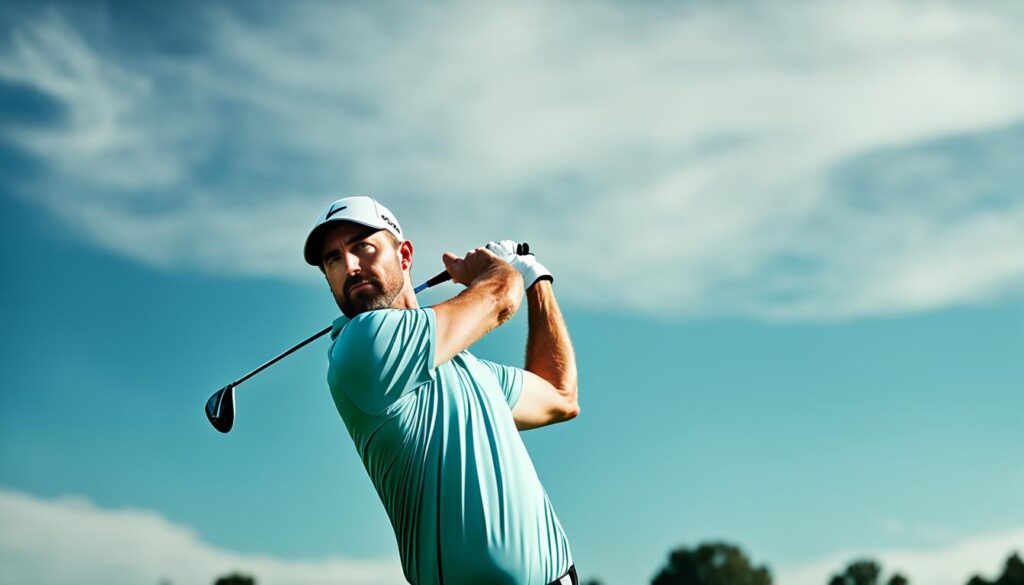
Key Takeaways:
- Visualization helps golfers make confident club selection decisions by picturing the trajectory and distance of their shots in their minds.
- Trusting your instincts and embracing your intuition is essential for intuitive decision-making on the golf course.
- Confident decision-making leads to better execution of shots and improved overall performance.
- Practice visualization techniques to enhance your ability to rely on your mental image and instincts when selecting clubs.
- Reducing overthinking through visualization and instinctive decision-making can improve your club selection process.
Considering Environmental Factors
When it comes to selecting the right golf club, it’s essential to take into account the environmental factors that can significantly impact your shot. Various elements such as wind direction and speed, the slope of the fairway, and the position of the pin all play a crucial role in determining which club to choose. By understanding and adjusting to these environmental factors, you can make more accurate shots and ultimately improve your overall score.
First and foremost, wind direction and speed are critical factors to consider during club selection. A strong headwind, for example, requires a more substantial club selection to achieve the desired distance. Conversely, a tailwind may call for a lighter club to prevent overshooting the target. By carefully analyzing wind conditions, you can make strategic choices that compensate for the effects of the wind on your shots.
The slope of the fairway is another important consideration when choosing a golf club. A downhill slope, for instance, may allow you to use a less lofted club for added distance. Conversely, an uphill slope may require a more lofted club to counteract the uphill nature of the shot. Understanding the slope of the fairway allows you to adapt your club selection to optimize your performance in different terrains.
The position of the pin on the green is yet another crucial aspect to consider. Pin position determines the length and accuracy required for your shot. If the pin is located towards the back of the green, selecting a club that provides more distance becomes necessary. Conversely, if the pin is positioned towards the front, a shorter club may be more suitable for achieving accuracy. Being mindful of the pin position helps you strategize your club selection to aim for precise shots and potential birdies.
“When selecting a club, it’s important to assess the environmental factors that come into play. By adapting to wind direction, accounting for the slope of the fairway, and evaluating the position of the pin, you can make more informed decisions that directly impact the outcome of your shots.”
Considering these environmental factors allows you to make more strategic and calculated decisions when selecting a golf club. By adjusting your club choice based on wind direction and speed, the slope of the fairway, and the pin position, you can enhance your accuracy and maximize your performance on the course.
In Summary:
– Wind direction and speed, the slope of the fairway, and the pin position are vital environmental factors to consider during club selection.
– Wind conditions influence the choice of club, with headwinds requiring stronger clubs and tailwinds requiring lighter ones.
– The slope of the fairway determines whether a more or less lofted club is needed to optimize distance and accuracy.
– The position of the pin on the green impacts the club selection, with longer clubs necessary for back pins and shorter clubs for front pins.
– Taking these environmental factors into account allows for more informed club selection and improved shot outcomes.
The Importance of Practice and Familiarity
When it comes to golf club selection, practice makes perfect. Spending time on the driving range and experimenting with different clubs are essential steps to becoming comfortable with the various options available to us as golfers. By practicing different shot types and exploring the strengths and weaknesses of each club, we can develop a familiarity that will greatly improve our decision-making on the course.
Practicing with different clubs allows us to understand their unique characteristics and how they perform in different situations. We can experiment with different lofts, shaft flexes, and clubhead designs to find the ones that suit our swing and desired shot shape. This experimentation lets us hone in on the clubs that provide the best results for our game.
Furthermore, practicing different shot types helps us adapt to various on-course scenarios. From tee shots to approach shots and delicate pitches, each shot requires a different club and approach. By practicing these shots repeatedly, we can develop muscle memory and confidence in our club selection process.
“The more we practice and become familiar with our clubs, the more equipped we will be to select the right club for each shot. Practice is essential for developing the skills necessary for making smart club choices on the course.”
Remember, familiarity breeds confidence. The more comfortable we are with our clubs, the better we can execute shots without second-guessing our decisions. Practice not only improves our physical technique but also enhances our mental game, allowing us to trust our instincts and make confident club selection choices.
Practice Tips for Golf Club Selection
- Regularly visit the driving range to practice with your full set of clubs.
- Experiment with different clubs for different shot types.
- Practice different shot types, including tee shots, approach shots, and short game shots.
- Focus on developing a feel for each club and understanding its unique characteristics.
- Prioritize consistency and accuracy over distance during practice sessions.
- Simulate on-course scenarios and practice club selection accordingly.
- Observe and learn from experienced golfers’ club selection strategies.
By dedicating time to practice and becoming familiar with our clubs, we can elevate our golf club selection skills to a whole new level. The more we practice, the more confident and prepared we will be to make well-informed club choices on the course.
Conclusion
In conclusion, the psychology behind golf club selection is a fascinating and multifaceted aspect of the sport that should not be overlooked. By understanding the complexity of golf, the influence of the golfer’s mind, and the importance of understanding one’s own game, golfers can make smarter club choices that can greatly impact their performance on the course.
Incorporating visualization techniques and trusting their instincts can help golfers make confident and intuitive club selection decisions. Considering environmental factors such as wind direction, fairway slope, and pin position can also contribute to more accurate shots. And of course, regular practice and experimentation with different clubs are essential for becoming comfortable and familiar with various options.
By focusing on the psychology behind golf club selection and honing their decision-making skills, golfers can enhance their overall game and achieve better results. So, next time you step onto the course, remember the significance of club selection and the mental strategies that can take your game to the next level!
FAQ
What is the psychology behind golf club selection?
The psychology behind golf club selection refers to the mental factors involved in choosing the right club for each shot. It involves understanding the complexity of the game, the influence of the golfer’s mind, and considering various psychological factors when making club selection decisions.
How does the complexity of golf impact club selection?
Golf is a complex sport with numerous variables. Golfers have 14 different clubs at their disposal, each with its own purpose and usage. The conditions of the course, including lies and weather, can also affect club selection. The infinite possibilities and constant need for adjustment make golf club selection challenging.
How does the golfer’s mindset influence club selection?
Golf is not just a physical sport; it is also a mental game. Factors such as stress, pressure, and emotional control can impact club selection. By improving their mental game, golfers can develop strategies to handle stress, avoid yips, and enhance their overall performance on the course.
Why is it important to understand your own game and playing style for club selection?
Understanding your own game and playing style is crucial for making smart club choices. It involves identifying your strengths and weaknesses as a golfer, and selecting clubs that complement your abilities. This can help improve your accuracy, distance, and overall performance on the course.
How does visualization and instincts play a role in club selection?
Visualization is a powerful tool that can aid golfers in making confident club selection decisions. By visualizing the trajectory and distance of their shots, golfers can rely on their instincts and make decisions based on their mental image. This reduces overthinking and promotes more intuitive decision-making.
What environmental factors should be considered in club selection?
When selecting a golf club, it is important to consider factors such as wind direction and speed, the slope of the fairway, and the position of the pin. These environmental factors can greatly influence the shot and may require adjustments in club choice to make more accurate shots.
How does practice contribute to improved club selection?
Practice is essential for improving club selection skills. By spending time on the driving range and practicing various shot types with different clubs, golfers become more familiar and comfortable with their options. The more practice they have, the better equipped they will be to select the right club for each shot.
What is the significance of understanding the psychology behind golf club selection?
Understanding the psychology behind golf club selection is crucial for enhancing a golfer’s performance. By incorporating mental strategies, considering environmental factors, understanding one’s own game, and practicing regularly, golfers can improve their club selection skills and ultimately improve their overall game.
